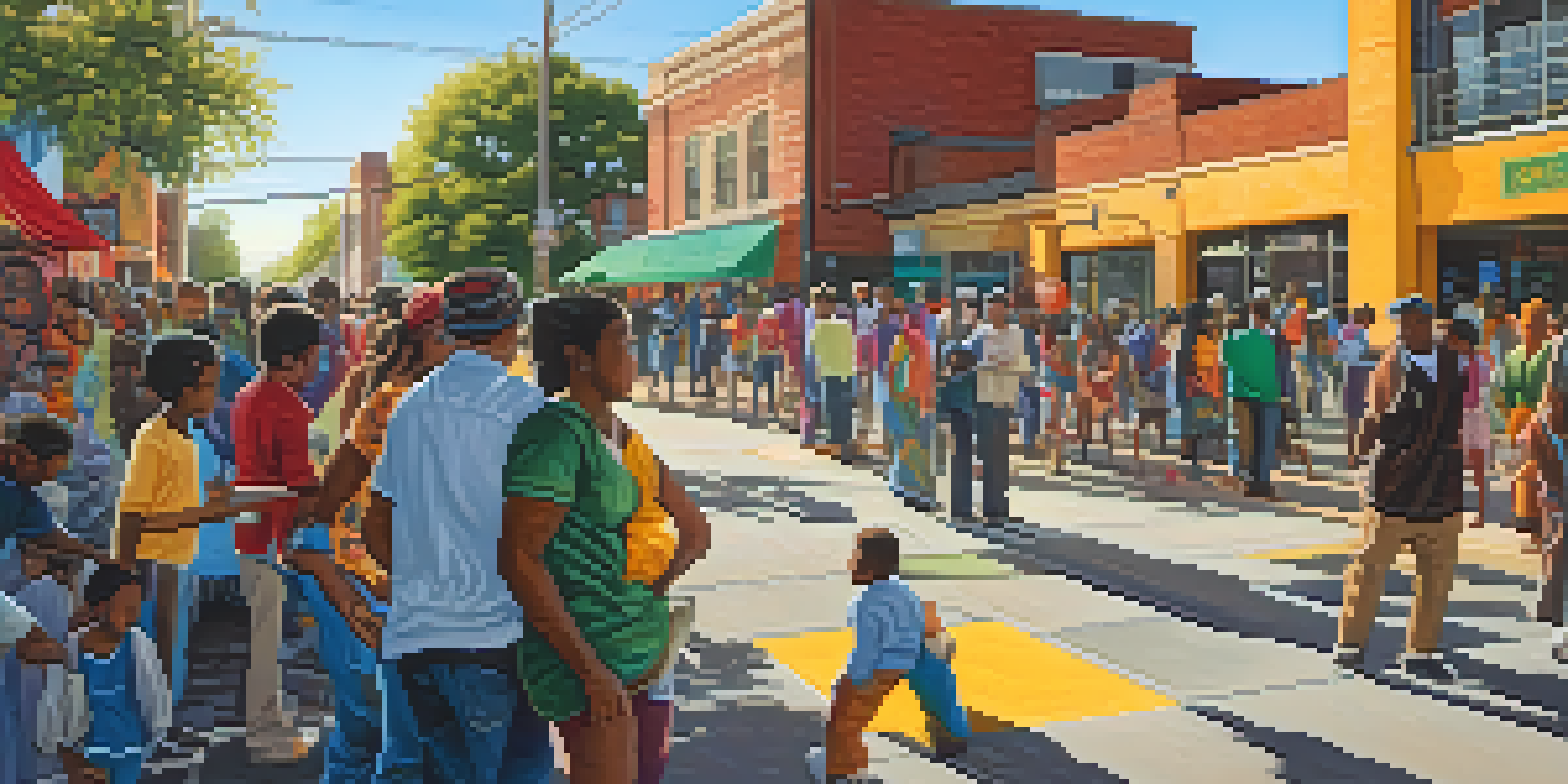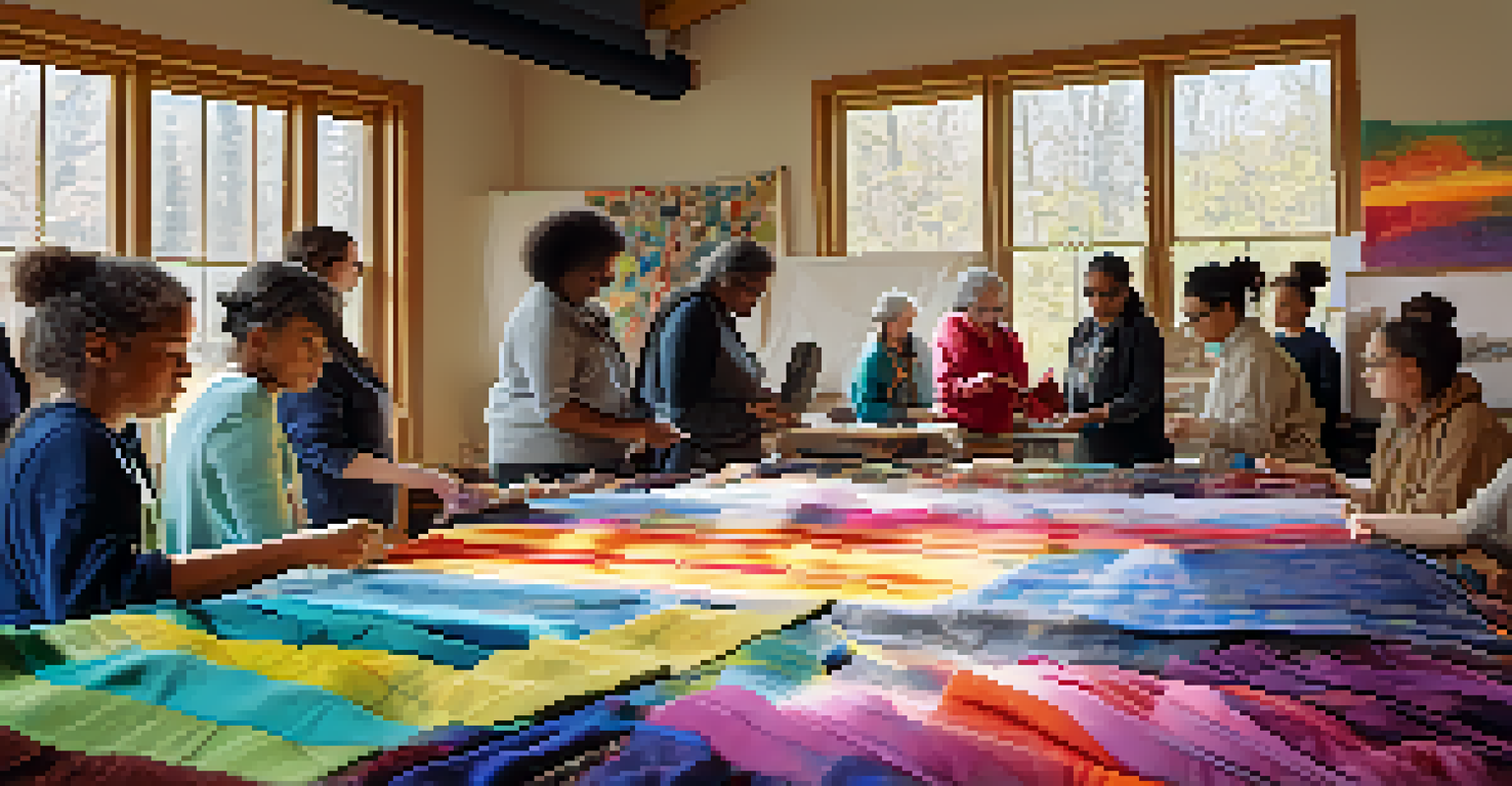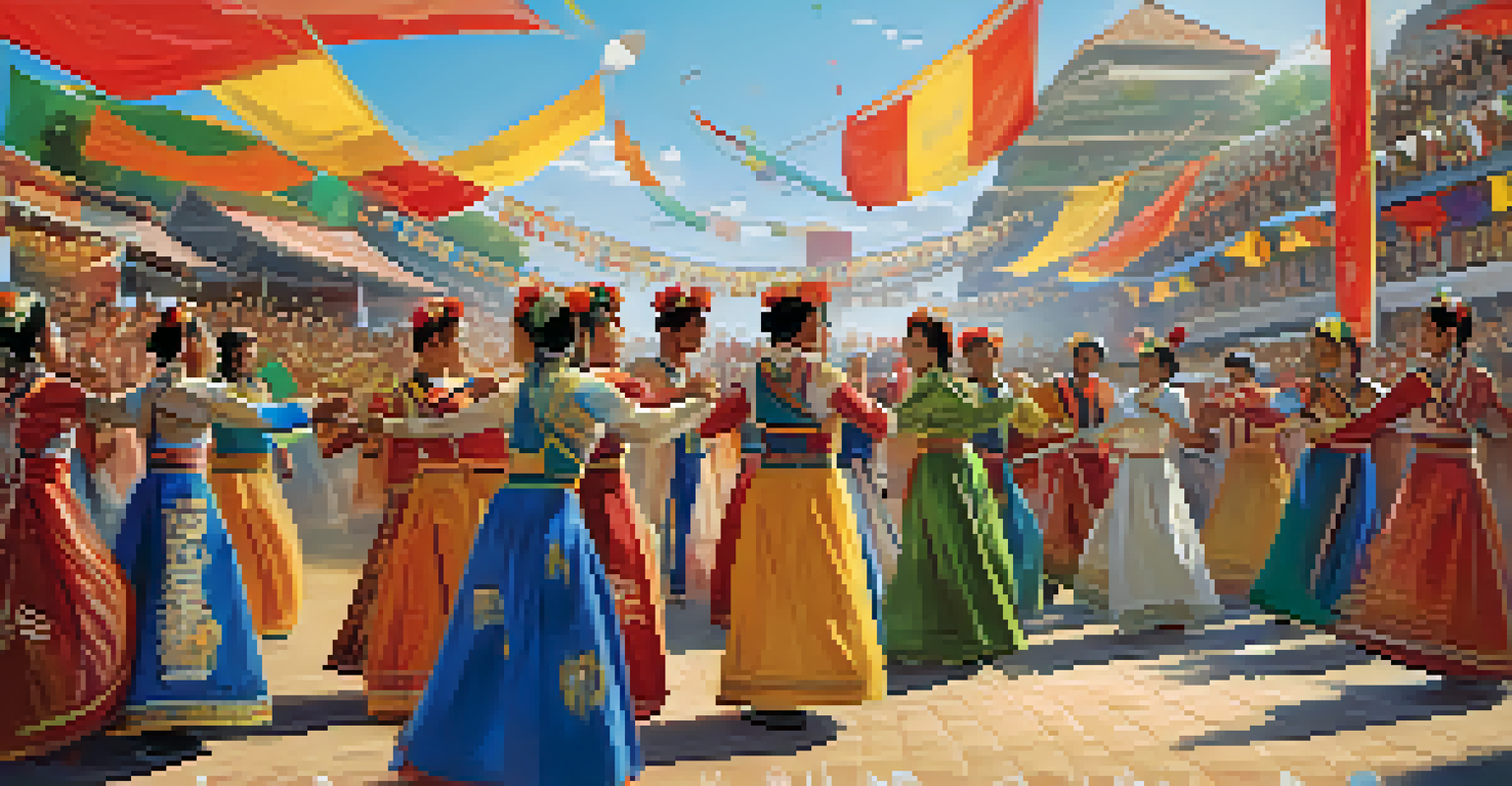Cultural Expression Through Art: Uniting Diverse Communities

Understanding Cultural Expression Through Art
Cultural expression through art is a way for communities to showcase their identities, values, and histories. It serves as a powerful tool for storytelling, allowing individuals to convey their experiences and emotions. Whether through music, painting, dance, or theater, art transcends language barriers, making it accessible to all.
Art is the most beautiful of all lies.
Every brushstroke, note, or movement carries meaning, reflecting the unique culture from which it originates. For instance, Indigenous art often incorporates symbols and narratives that communicate deep cultural significance. By engaging with these artistic expressions, audiences can gain insight into different ways of life, fostering empathy and understanding.
Moreover, art has the ability to inspire dialogue about cultural differences and shared human experiences. It encourages communities to celebrate diversity while finding common ground, ultimately contributing to social cohesion and harmony.
Art as a Catalyst for Community Unity
One of the most remarkable aspects of art is its ability to bring people together. Community art projects, such as murals or theatrical performances, often involve collaboration among diverse groups, fostering relationships and trust. These shared experiences can break down barriers, allowing individuals to connect on a deeper, more personal level.

For example, street art initiatives in urban areas often invite local artists from different backgrounds to contribute their perspectives. These projects not only beautify neighborhoods but also create a sense of ownership and pride among residents. As people work side by side, they develop a collective identity that transcends their differences.
Art Unites and Fosters Community
Art encourages collaboration among diverse groups, breaking down barriers and creating a sense of shared identity.
Additionally, art festivals and cultural events provide platforms for various communities to showcase their traditions. By engaging with one another's art forms, attendees can appreciate the richness of diverse cultures, which encourages ongoing dialogue and collaboration.
The Role of Storytelling in Artistic Expression
Storytelling is a fundamental aspect of cultural expression, and art serves as a medium to share these narratives. Every culture has its own folklore and traditions, often passed down through generations in the form of songs, dances, or visual art. When these stories are shared through art, they create connections that resonate with audiences across different backgrounds.
Art can change the world because it can change people.
For instance, a powerful dance performance can evoke emotions related to a specific cultural experience, allowing viewers to feel a sense of belonging or understanding. This shared emotional experience can ignite conversations about cultural heritage and collective identity. As a result, storytelling through art invites reflection and dialogue about our shared humanity.
Furthermore, artists often use their work to address social issues, highlighting struggles and triumphs that resonate universally. By sharing these stories, they encourage empathy and awareness, prompting communities to come together to support one another.
Art as a Reflection of Identity and Heritage
Art is a mirror that reflects the identity of individuals and communities. It captures the nuances of cultural heritage, showcasing the values, beliefs, and struggles that shape a community's essence. When artists create works that draw from their backgrounds, they contribute to a larger narrative of cultural representation.
Consider the vibrant textiles produced by various cultures; each pattern and color tells a story of tradition and innovation. These artistic expressions not only preserve cultural legacies but also introduce them to new audiences, promoting appreciation for diversity. This sharing of heritage fosters pride and respect among communities.
Storytelling Connects Cultures
Art serves as a powerful medium for storytelling, allowing individuals to share cultural narratives that resonate across backgrounds.
Moreover, as artists explore and reinterpret their identities, they can challenge stereotypes and misconceptions. By presenting their truths through art, they encourage viewers to engage with and question their own perceptions, leading to greater understanding and unity.
Bridging Generational Gaps Through Artistic Collaboration
Art can bridge generational divides, fostering connections between youth and elders within communities. When younger artists collaborate with seasoned creators, knowledge and skills are exchanged, enriching the artistic landscape. This intergenerational dialogue not only enhances creativity but also nurtures respect for cultural traditions.
For example, community workshops that pair teenagers with local artisans can result in innovative art pieces that honor traditional techniques while incorporating contemporary styles. These collaborations demonstrate that art is not static; it evolves with the times while maintaining its roots. As young artists learn from their elders, they also introduce fresh perspectives that can reinvigorate traditional practices.
Such partnerships also allow for storytelling across generations, as elders share their experiences and wisdom through the medium of art. This process not only preserves cultural narratives but also ensures that younger generations remain connected to their heritage.
Art as a Vehicle for Social Change
Art has long been a vehicle for social change, addressing pressing issues within communities. Artists often use their platforms to raise awareness about injustices and inspire action, igniting conversations that can lead to meaningful change. By shedding light on social issues through their work, they empower communities to advocate for their rights.
For instance, street performances and murals have been used to protest against inequality, violence, and discrimination. These artistic expressions can provoke thought and mobilize action, uniting people around a common cause. When communities rally together in support of these movements, they strengthen their collective voice and demand change.
Art Drives Social Change
Artists utilize their work to address social issues and inspire action, empowering communities to advocate for justice and equality.
Moreover, art can provide healing in the aftermath of social unrest. Community art projects aimed at recovery and reconciliation help individuals process their experiences and foster a sense of belonging. This healing process allows communities to rebuild and emerge stronger, united by their shared experiences.
Celebrating Diversity Through Art Festivals and Events
Art festivals and cultural events play a crucial role in celebrating diversity and fostering unity among communities. These gatherings provide a platform for artists from various backgrounds to showcase their talents and share their stories, creating an inclusive environment. Attendees can experience a wide range of artistic expressions, from music and dance to visual art and culinary delights.
For instance, multicultural festivals often feature performances from different cultural groups, allowing attendees to appreciate unique art forms. This exposure not only enhances understanding of different cultures but also sparks curiosity and encourages ongoing engagement. As people immerse themselves in diverse artistic expressions, they learn to appreciate the richness of human experience.

Furthermore, these events often encourage collaboration among artists, creating opportunities for cross-cultural partnerships. By working together, artists can blend their styles and share their narratives, resulting in innovative works that reflect a shared vision for a united community.